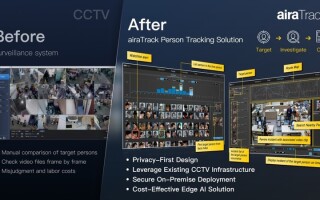Industrial Metaverse Blueprints, Part 1: Definitions & Requirements for the Most Impactful Economic Outcomes, Part 1
October 01, 2022
Story

Gartner[1] defines the Metaverse as “a collective virtual open space created by the convergence of virtually enhanced physical and digital reality. It’s physically persistent and provides enhanced immersive experiences.” IDC[2] defines the metaverse as an evolution of today’s internet that leverages mobile devices, augmented and virtual reality headsets and next-generation networks to create persistent and continuous user experiences with a strong sense of presence.
Neither are inaccurate. However, neither accurately portrays the depth, scale, and potential of the metaverse beyond its current, nascent form or its value beyond basic human entertainment as a solution to some of the world’s most pressing, complex problems.
Indeed, the metaverse represents a massive paradigm shift that promises to redefine how we approach solving problems through technology. The earliest and biggest opportunities to apply its concepts lie in industry, where leading organizations are already leveraging the building blocks of the metaverse – whether they know it or not – in the deployment of digital twins that will one day form systems of systems that comprise entire virtual worlds.
This is the first article in a series covering the industrial metaverse and digital twin technologies, applications, current industry activities, and the potential for standards. We encourage you to follow this series, comment, and ask questions. Participation and collaboration are critical as we embark on what may be the most significant inflection point in the history of technology.
The Imperative for Change
Humanity has come a long way. Since the invention of the Internet, our global society has made tremendous economic and social progress. We can literally learn about anything with the click of a button. We can feed more people per square acre, cure more illnesses, travel around the world in a day, and communicate with anyone anywhere in the world from our home.
In stark contrast to these impressive advances is the realization of how much waste occurs. A 2010 executive report from IBM Global Business Services[3] cited that more than 50 percent of the world’s food supply never makes it to consumers. Thirty-five percent of all water used every year is wasted by poor agricultural management. Twenty-five percent of electricity generated each year is never consumed. Road congestion and poor infrastructure routing issues in the U.S. alone waste enough crude oil annually to meet the entire demand of Germany and the Netherlands combined for two years.
To this point, progress in a given domain (e.g., infrastructure) has been the result of designing, deploying, and advancing each system within its own context – with little-to-no consideration for how that system interacts as a part of our global society. Today’s challenges – adequate food, clean water supply, energy shortages, climate change – cannot be solved by the same siloed approach. These challenges are impacted by many systems and industries and require more than a single advancement within a single system.
A new mindset is critical to solve these challenges.
A System of Systems Approach
The IBM report views our world as a complex “system of systems” with each system interacting with others in a variety of ways. Collectively, this system-of-systems comprises 100% of our gross domestic product (GDP).
The IBM report concludes that these systems are not simply interrelated – they are highly dependent on each other. Inefficiencies not only lie within each system, but also in the interrelationships of these systems.

[Figure 1. Inefficiencies within modern socioeconomic systems of systems demands that solutions be developed with their interdependencies in mind. (Source: IBM Global Business Services)]
We’ve been increasing efficiency and removing waste from systems for years. However, when the goals and objectives are defined within a system, it may cause increased inefficiencies within other related systems to the point where there is a net overall increase in waste.
For example, if two non-competing manufacturers are located close to each other in the United States, and each has optimized its own logistics system to ship product overseas, the transportation systems that deliver these products can in turn be operating sub-optimally with unused capacity.
If these cross-domain logistics systems had the ability to connect and share information, they could share the same transportation services to improve overall capacity utilization, which in turn would reduce fuel consumption, pollution, and traffic congestion, while reducing their own shipping costs – a positive outcome for all stakeholders.
The challenges are not just technical or logistical. This example illustrates that our biggest challenge is overcoming the current mindset through which we operate. We are programmed to deliver on short-term goals with maximum efficiency within our domain without considering larger consequences.
The challenges we face today cannot be solved by continuing to optimize at the enterprise or system level – they will only be solved by using a comprehensive, coordinated, and continuous effort across all systems.
Leveraging the Metaverse
The metaverse represents an opportunity to solve complex problems by adopting a system-of-systems approach. The goals of every system within the metaverse can be tied to increasing overall efficiency and affordability and reducing waste from a global perspective. Positive or negative changes within a single system are balanced against the overall impact to the system of systems.
This is the only way we can tackle complex problems affected by many related systems.
This series focuses on the industrial and economic aspects of the metaverse and how using metaverse and digital twin technologies can help model and refine systems, assess the related impact on other systems, and predict the overall effect on the global system of systems.
Of course, the only way this can be accomplished is if these systems are capable of interoperating with one another, both within and across domains.
Seven Principles of System Interoperability
Fortunately, organizations have already begun working towards these goals. For example, the Digital Twin Consortium[4] has adopted a system-of-systems approach and laid significant groundwork by defining a “System Interoperability Framework” based on the following key concepts:
- System-Centric Design. Designing products and applications as types of systems simplifies their ability to connect and interact in real-time to form a dynamic system of systems.
- Common Metamodel. When all systems share a common metamodel for encapsulating capabilities, purpose, and interface, they become inherently interoperable.
- Holistic Information Flow. Information for holistic understanding and optimal decision-making can originate, and must be shared and understandable, across multiple domains.
- Stateful Interactions. The state of each system represents information, and changes in state are reflected in the information exchanged among systems.
- Federated Repositories. Information must persist and be replicated where needed for optimal decision-making and not be restricted to a centralized repository.
- Actionable Information. Shared information must be contextual, trusted, resilient, and read-optimized for timely and appropriate reaction to state changes among systems.
- Scalable Mechanisms. Common interoperability mechanisms, embedded within each system, must be simple in design to scale from a single connection and interaction between two systems to a dynamic coalition of distributed, autonomous, and heterogeneous systems within a complex global ecosystem.

[Figure 2. Seven principles of Digital Twin System Interoperability Framework ensure solutions are designed optimally for collaboration. (Source: Digital Twin Consortium)]
A key objective of this framework is to help unify nascent ecosystems of high-value, multi-vendor services that can seamlessly plug into a multi-dimensional, interoperable system of systems. More specifically, it lays the groundwork for building interactive ecosystems of interoperable digital twins.
Getting all stakeholders within these global systems on the same page begins with common terminology and agreement on the foundational principles. No small task, but the Consortium’s System Interoperability Framework represents a watershed moment in making the system-of-systems mentality a reality.
All contributors understanding and building interoperable twins within the metaverse will allow for composition of optimized, collaborative systems that can change the world in a positive way without needing to blindly implement well-intended systems based on unproven assumptions.
An Unprecedented Opportunity
Going forward, our definition of success cannot be within a microcosm of a system component. We must all change our mindset – short-term thinking and isolated optimization cannot dictate our future. Analysis of proposed system optimizations and their positive or negative impact on other systems must be ingrained in us. We must utilize the industrial metaverse and interoperable digital twins to achieve breakthrough solutions for the toughest world problems.
The industrial metaverse represents the biggest paradigm shift in history. Adopters have an opportunity to move our world forward or ultimately risk extinction.
In Part 2, we look at digital twin development, interoperability, use cases, and outcomes.
Doug Migliori is Global Field CTO at CloudBlue, an Ingram Micro subsidiary and global enabler of Everything-as-a-Service (XaaS) marketplaces and ecosystems. Doug has over 20 years of IT consulting experience, applying innovative strategies to digital transformation that leverage digital twin, IoT, AI, mobile, DLT, and cloud/edge native technologies. As an interoperability thought leader, Doug developed an ontology-based event-driven architecture (OBEDA) for highly distributed, real-time systems. He is co-author of the System Interoperability Framework whitepaper published by the Digital Twin Consortium.
Curt Schwaderer has served as Embedded Computing Design’s Technology Editor for more than 25 years and is a veteran of the networking and embedded systems industries. With a track record of identifying disruptive technologies and their timely application to solving real-world problems, he has led software architecture, design, and implementation teams at Wind River, RadiSys, Microware, and IP Fabrics, a company he co-founded that was later acquired by Yaana Technologies where he currently serves as Vice President of Engineering.
Brandon Lewis is Editor-in-Chief of Embedded Computing Design where he guides content strategy and community engagement across the property’s print, digital, and events ecosystem. With more than a decade of experience in the electronics media industry, he has published thousands of technical articles and news stories while also launching well-known multimedia platforms such as Dev Kit Weekly, Embedded Toolbox, and the Embedded Insiders podcast.
References:
- “Gartner predicts 25% of people will spend at least one hour per day in the metaverse by 2026.” Gartner. Retrieved June 23, 2022, from https://www.gartner.com/en/newsroom/press-releases/2022-02-07-gartner-predicts-25-percent-of-people-will-spend-at-least-one-hour-per-day-in-the-metaverse-by-2026.
- “The Metaverse: Separating the Hype from the Long-Term, Real-World Technology Implications.” IDC. http://www.idc.com/getdoc.jsp?containerId=US48466921.
- “The world’s 4 trillion-dollar challenge.” IBM Institute for Business Value, January 2010. www.ibm.com/ibm/files/Y067208R89372O94/11The_worlds_4_trillion_dollar_challenge-Executive_Report_1_3MB.pdf.
- “Digital Twin System Interoperability Framework.” Digital Twin Consortium, December 2021. https://go.omgprograms.org/l/658223/2021-11-29/5dv52b.





